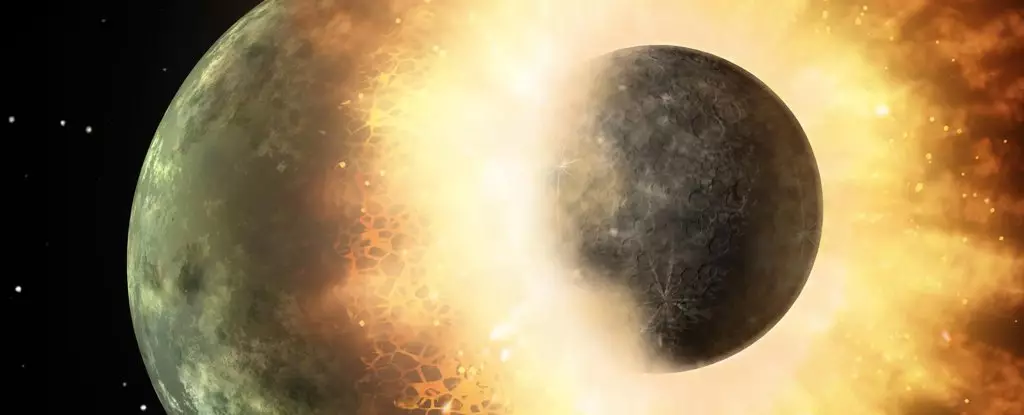The formation of the Moon has long been a topic of debate among scientists, with the prevailing theory suggesting that a Mars-sized object collided with Earth, leading to the creation of our lunar companion. However, a recent study challenges some of the accepted notions surrounding the Moon’s formation and evolution.
According to current research, the Moon came into existence around 4.5 billion years ago, following a cataclysmic collision between Earth and a protoplanet named Theia. This impact resulted in the ejection of debris that eventually coalesced to form the Moon. While this theory is supported by evidence such as the composition of lunar rocks and Earth’s mantle, a new study by Stephen Lepp and his team sheds light on the dynamics of the material ejected during the collision.
After its formation, the Moon orbited Earth at a much closer distance than it does now, gradually moving away over time due to tidal effects. The lunar surface, initially molten, slowly cooled and solidified to create the distinct layers we observe today. The Moon’s surface bears scars from heavy bombardment, with impact basins and craters dotting its landscape. Volcanic activity further shaped the Moon, leading to the formation of the lunar maria.
The Moon’s orbit around Earth is slightly elliptical, with a small eccentricity that causes it to vary in distance from 364,397 km to 406,731 km. In the early days of the Earth-Moon system, the orbits of particles in the debris cloud were far less stable than they are now. The concept of nodal precession, where orbital intersections gradually shift, played a significant role in shaping the orbits of particles around the Earth-Moon system.
Through their research, Lepp and his team found that polar orbits were the most stable configuration for particles in the early Earth-Moon system. As the separation between Earth and Moon increased, driven by tidal interactions, the space where polar orbits could exist diminished. Today, with the Moon at its current distance, polar orbits are no longer stable due to the dominant influence of nodal precession driven by the Sun.
The presence of polar orbiting material could have significant implications for binary systems like the Earth and Moon. If a substantial amount of material were to enter a polar orbit, it could lead to an increase in the eccentricity of the system. This highlights the complex interplay of forces that have shaped the Earth-Moon system over billions of years.
Reevaluating the formation and evolution of the Moon offers new insights into the dynamic processes that have shaped our celestial neighbor. By delving deeper into the intricacies of lunar orbits and stability, we not only expand our understanding of the Moon’s history but also gain a greater appreciation for the complex interactions that govern the cosmos.



Leave a Reply